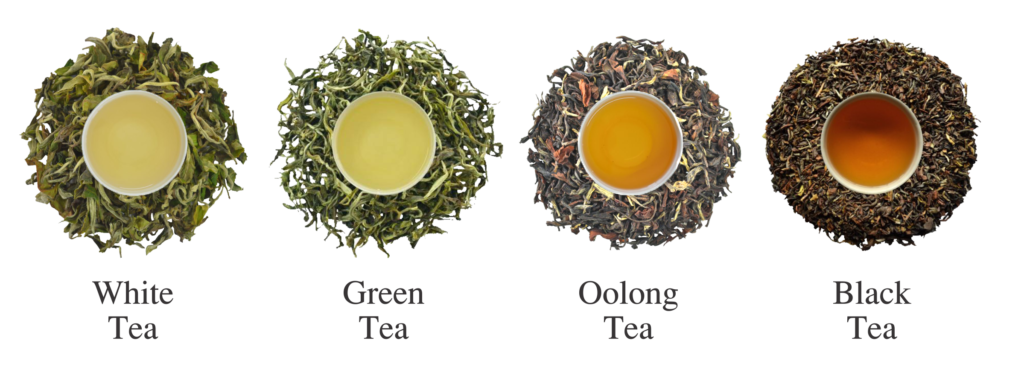
Tea is a beverage made from the leaves of evergreen shrub called Camellia siensis. The tea plant is native South and Southeast Asia, but it is also cultivated in tropical areas of South America and Africa. According to the producing and processing of the tea leaves six types of teas are distinguished: white tea, yellow tea, green tea, oolong tea, black tea and post-fermented tea. Each type of tea has a unique aroma, taste and visual appearance. The differences in chemical composition, colour, taste and aroma are created by controlling the degree of oxidation during processing. White tea is immediately dried and unoxidized. Yellow and green teas are unwilted and unoxidized. Oolong tea is partly oxidized and black tea is fully oxidized. Post-fermented tea goes through microbal fermentation after processing. Teas may be blended with other teas or mixed with flavourants or herbs to alter the flavor of the final tea.
Tea contains amino acids, caffeine, lignins, proteins, xanthenes, flavonoids and other bioactive components which give tea its color and taste. The most important chemicals in tea are polyphenols, especially tannins. Tannins give the drink its astringency. The chemical composition is different in each type of tea. Therefore each type of tea has a recommended range of temperatures to be applied in brewing because the wrong water temperature can cause an over extraction or under extraction of tannins. Green, white and yellow teas are minimally processed. The polyphenol content of these teas are very similar to that of the fresh leaves. Too hot water or long steeping time can make those delicate tea leaves taste bitter and less sweet. During oxidation the polyphenols are converted so oolong and black tea can be steeped longer time for stronger flavour and increased caffein content. Other factors like harvesting method, origin, storage conditions, water quality can affect the taste of tea too.

Herbal teas are beverages made from the infusion or decoction of herbs, spices, or other plant material in hot water. Unlike true teas herbal teas usually do not contain caffeine and tannins. Therefore herbal teas should be made with boiling water and steeping time can be longer in order to fully extract optimal flavor and color. Common herbs used for tea making are Chamomile, Peppermint, Ginger, Lavender, Hibiscus, Lemongrass, Rooibos etc.
| Tea | Amount of tea leves per cup | Water temperature | Steeping time | Caffeine containent per cup | Color | Taste |
|---|---|---|---|---|---|---|
| White tea | 2-3 g | 70-80ºC | 2-3 minutes | 15-39 mg | Pale yellow | Sweet and lightly vegetal flavour |
| Yellow tea | 2-3 g | 75ºC | 2 minutes | 30-64 mg | Bright yellow | Sweet, vibrant, and nutty flavour |
| Green tea | 2-3 g | 85ºC | 3 minutes | 30-50 mg | Green or light brown | Clean, grassy, flowery, vegetal flavour |
| Oolong tea | 2-3 g | 90 ºC | 2-3 minutes | 37-55 mg | Golden green or brown | Slightly sweet, melon flavor as well as a woody, roasted taste |
| Black tea | 2-3 g | 100ºC | 3-5 minutes | 45-90 mg | Red or dark brown | Smoky, brisk, earthy, spiced, nutty, metallic flavour |
| Post-fermented tea | 5 g | 100ºC | 5 minutes | 30-100 mg | Reddish-brown | Sweet, round and deep with light notes of bitterness |